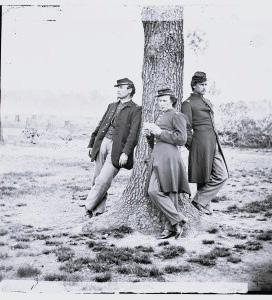The Tony Dewey Collection of Hartford Postal History























The Tony Dewey Collection of Hartford Postal History is not so much the story of Hartford, Connecticut, per se, but rather the story of the United States as told through the lens of one specific city. From the American Revolution to the Civil War, the introduction of adhesive stamps, competition between government and private post offices, the proliferation of transatlantic mail, the development of the railroads—essentially, if it was happening in America it was happening in Hartford, and Tony Dewey’s collection masterfully tells those stories though high-quality and rare material. We invite you to take a trip through Hartford’s history with us, but most importantly we want you to think about how these and similar stories can be told through your own hometown, wherever that may be.


The story of Hartford begins long before the invention of adhesive postage stamps. This letter, sent in the final years of the 18th Century, demonstrates how the postal rate (in this case 121⁄2 cents) was written directly onto the letter itself, meaning each piece of mail had to be taken to the post office counter. Prior to the 1840s postage rates were complex and expensive, limiting mail to the wealthy and educated.
The introduction of adhesive postage stamps in 1847 was nothing short of revolutionary. Patrons could now purchase stamps in advance and deposit mail whenever was most convenient. This letter shows one of America's first postage stamps used from Hartford just several months after it was issued.

In the middle of the 19th Century, the United States government had a fickle relationship with private companies that carried mail. Sometimes these firms worked in direct competition to the Post Office, while in the case of the Hartford Penny Post a symbiotic relationship was developed whereby mail could be delivered directly to your door.



The onset of the Civil War in 1861 led to major changes taking place within the United States Post Office. Stamps printed before the Civil War were replaced with new designs, so that these older stamps could not circulate as currency within the Confederacy. The sender of this envelope attempted to use a pre-Civil War stamp but was stopped by the Hartford post office, where a new stamp was applied.
 Colonial Map of Hartford
Hartford Post Office in the 1800s
Mail Carrier Service The 3rd Connecticut Infantry Regiment
Colonial Map of Hartford
Hartford Post Office in the 1800s
Mail Carrier Service The 3rd Connecticut Infantry Regiment
Many citizens of Connecticut were quick to illustrate their patriotism, quite literally, with envelopes bearing various pro-Union designs. This envelope, showing a soldier with an American flag, was produced in Hartford by a coin dealer who decided to enter the envelope business shortly after the Civil War began.

As the 19th Century progressed the world grew smaller and smaller, with direct lines of communication to all corners of the globe spreading rapidly.This letter, which cost 45 cents to send when it was mailed in 1862, was carried to Kanagawa, Japan by way of London and Hong Kong. Such pieces of mail also demonstrate the rapid commercial growth in Hartford at the time.

In 1869 the United States issued their most controversial postage stamps as yet. While praised today for their beauty, the "Pictorial Issue" was the first to not feature only busts of prominent Americans, instead including locomotives and eagles. The fact that they were only used for about 13 months makes this envelope to Sweden all the more remarkable.



No history of Hartford would be complete without a mention of the city’s most famous resident, Samuel L. Clemens (known by his nom de plume, Mark Twain). This envelope was sent to James R. Osgood, the publisher responsible for The Prince and the Pauper and Life on the Mississippi. After low sales of the latter, Clemens terminated their relationship.



The history of the post cannot be told solely through letters and envelopes. Other publications, from newspapers and price lists to this beautiful almanac from the Hartford Courant were also eligible to pass through the mail. The postage rates for these sorts of items were typically much lower than normal letter mail; for example, although this almanac weighed almost two ounces it cost just 1 cent to be mailed within Hartford.


 Soldiers in Connecticut during the Civil War
The Persia carried this letter to England
Locomotive at Hartford Station
Mark Twain
Hartford Courant Building in the late1800s
Soldiers in Connecticut during the Civil War
The Persia carried this letter to England
Locomotive at Hartford Station
Mark Twain
Hartford Courant Building in the late1800s











1. City Hall: the collection includes a letter from the mayor of Hartford, Thomas Seymour.
2. The Mark Twain House: Two letters are from Samuel L. Clemens.
3. Hartford Union Station: several letters are sent on the Hartford, Providence, Fishkill Railroad.
4. Ezekiel William Jr.’s House: Williams served as the postmaster for Hartford from 1795 to 1803.

5. The Captain Elisha Phelps House: there is a letter from Phelps to William Bristol. Phelps served as a representative for Connecticut (1819-21, 1825-29).
6. Connecticut Missionary Society Monument: the collection includes a letter from the society to Rev. Milton Badger.
7. Hartford Insurance Company: several letters include advertisements for the long-standing company that still holds headquarters in Hartford today.
8. Connecticut General Life Insurance Company: an advertising cover was sent to New York by this established company.
9. Steam Boiler Inspection and Insurance: an illustrated cover advertised this company that is still in downtown Hartford.
10. The Hartford Courant: Several unique pieces of mail come from the oldest continuous newspaper in the country.
Harmer very quickly became synonymous with high-quality philatelic auctions in our namesake’s native Great Britain. By 1940 it was time for the company to branch out, and a satellite office was opened across the Atlantic in New York City.
H.R. Harmer first rose to prominence in the United States when our firm was selected to sell the collection of the late President Franklin Delano Roosevelt. These auctions were front-page news even in the non-philatelic press, as never before had the stamp collection of such a beloved public figure been made available to collectors.
Over the coming decades, H.R. Harmer would go on to sell two of the most comprehensive and valuable collections ever to cross the auction block—those of Alfred H. Caspary and Alfred F. Lichtenstein, both of which would set new high-water marks in the industry. And, since 2019, H.R. Harmer has been selling the collection of German businessman Erivan Haub—a series of auctions which has once again placed H.R. Harmer at the forefront of the philatelic world.
Today, led by a young and enthusiastic team, H.R. Harmer is still dedicated to providing collectors with the same professional service and philatelic expertise that our company was founded upon all those decades ago.
